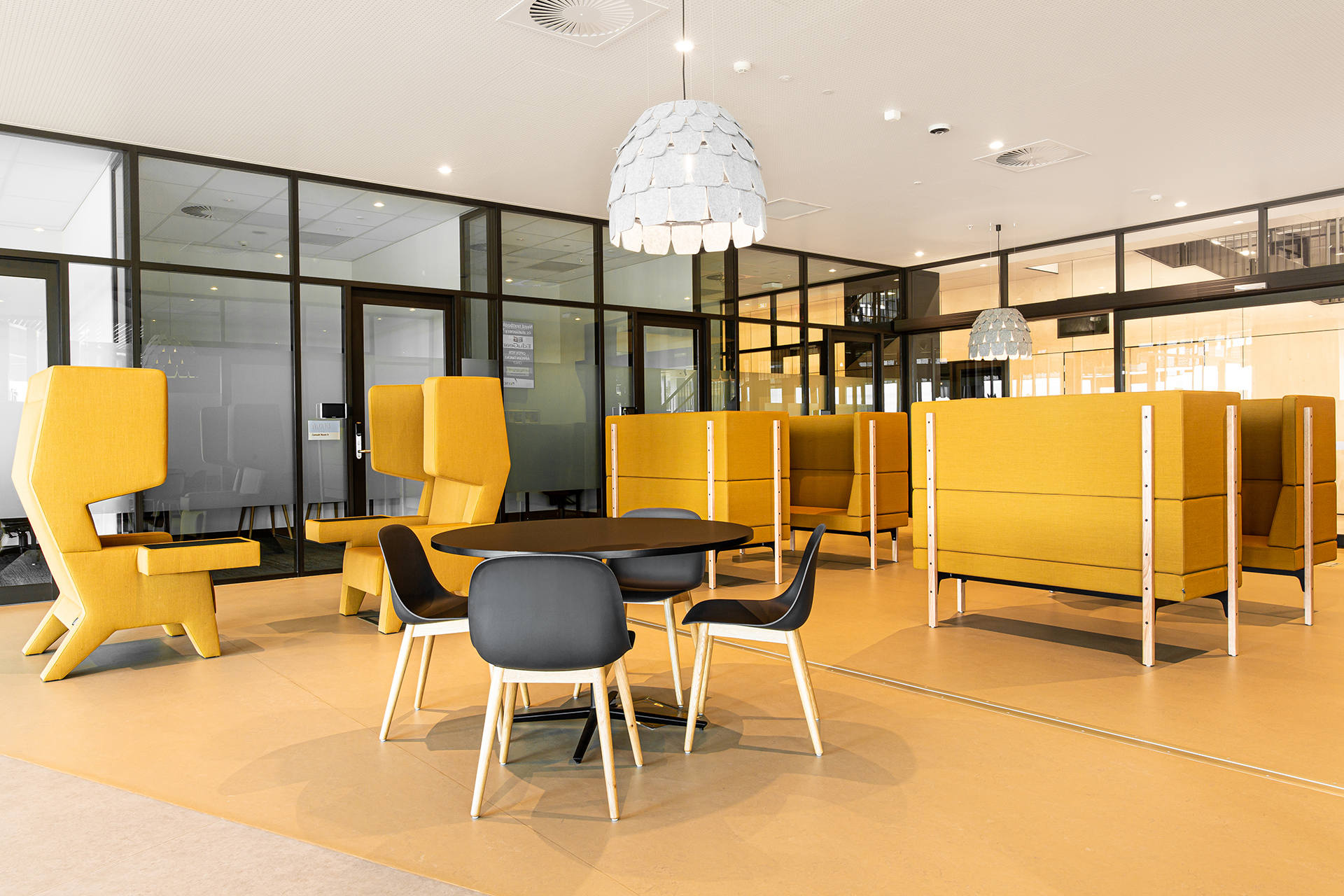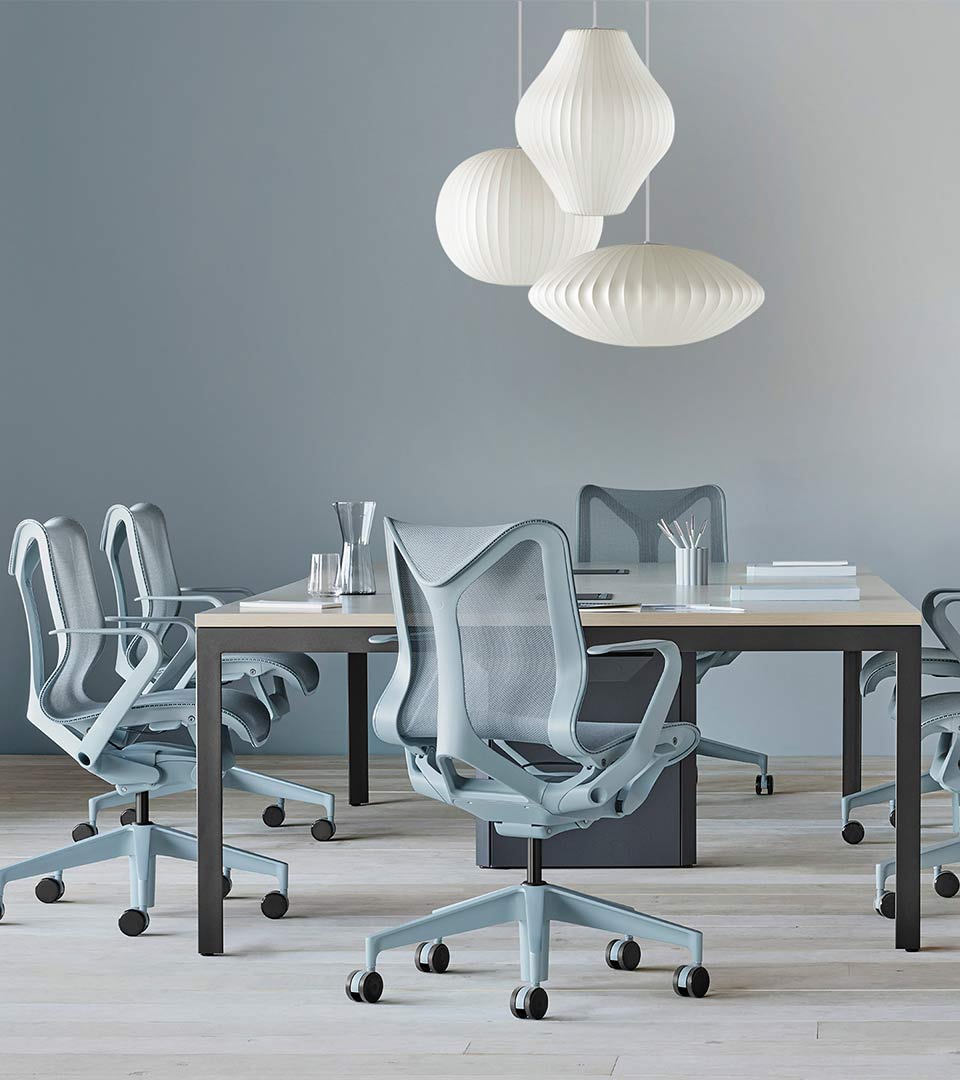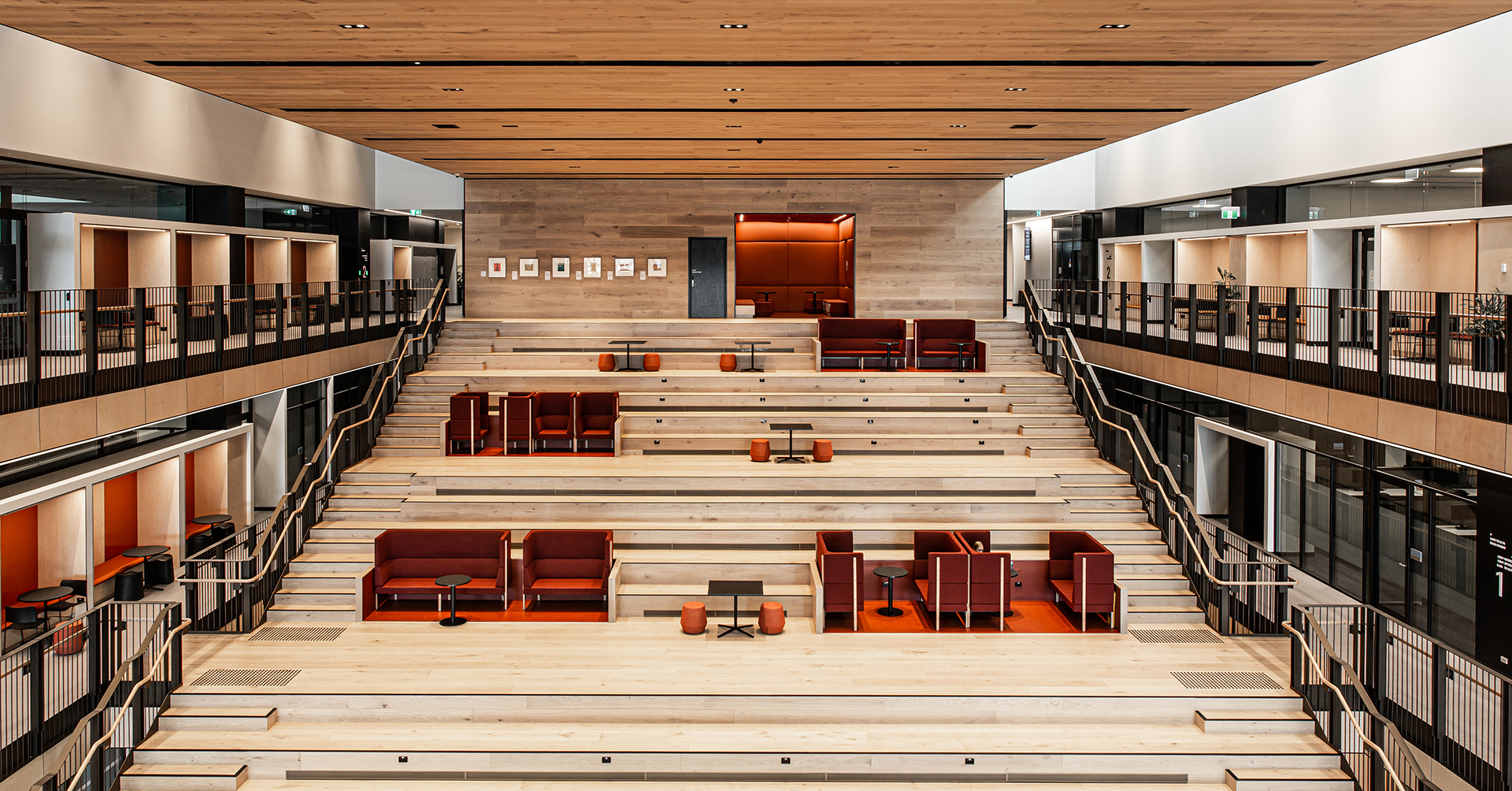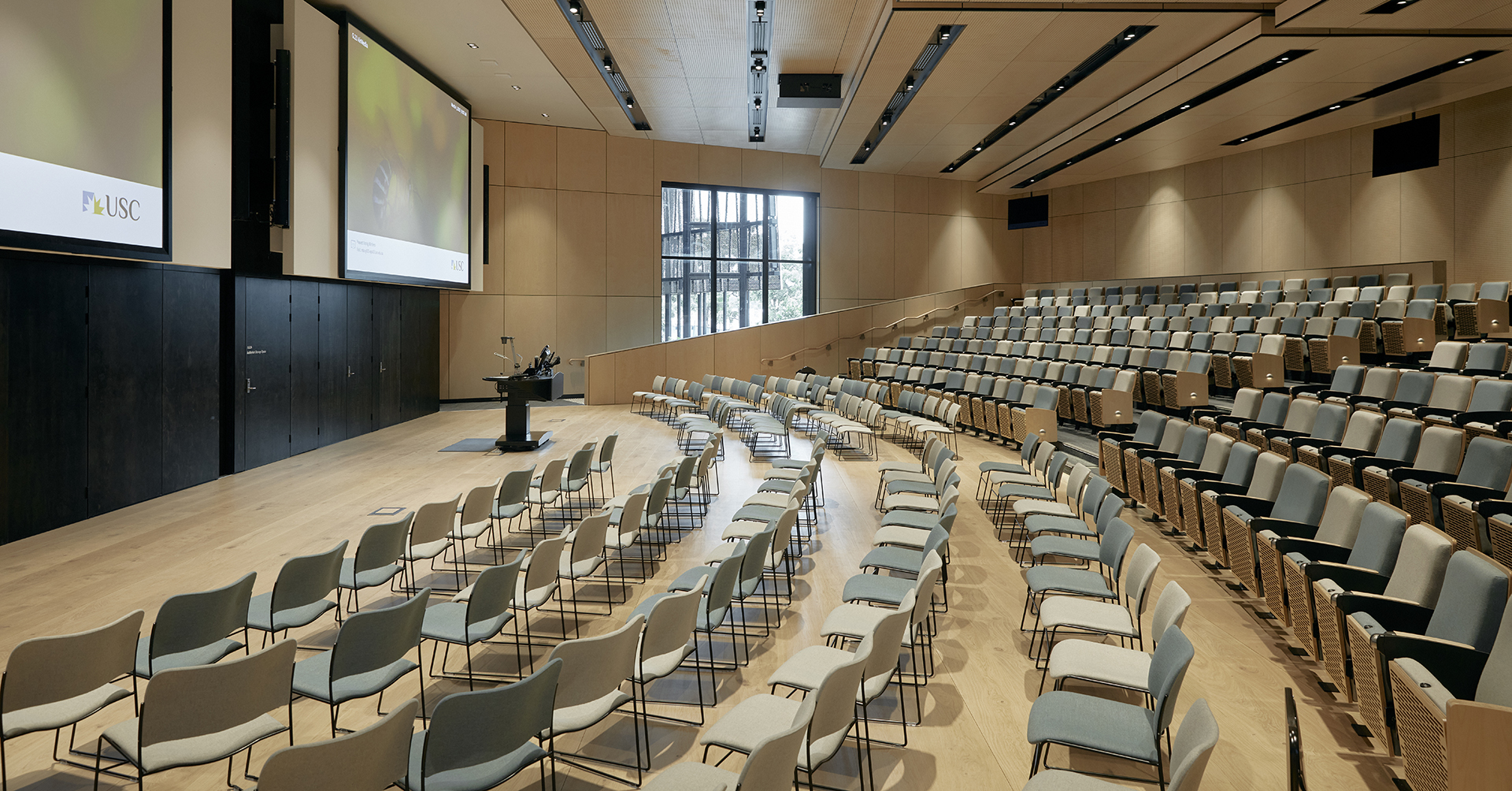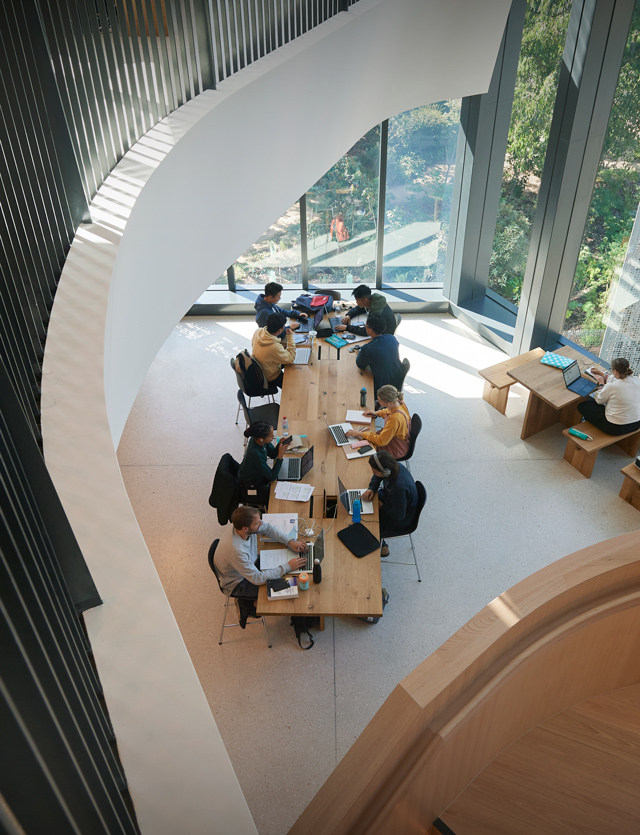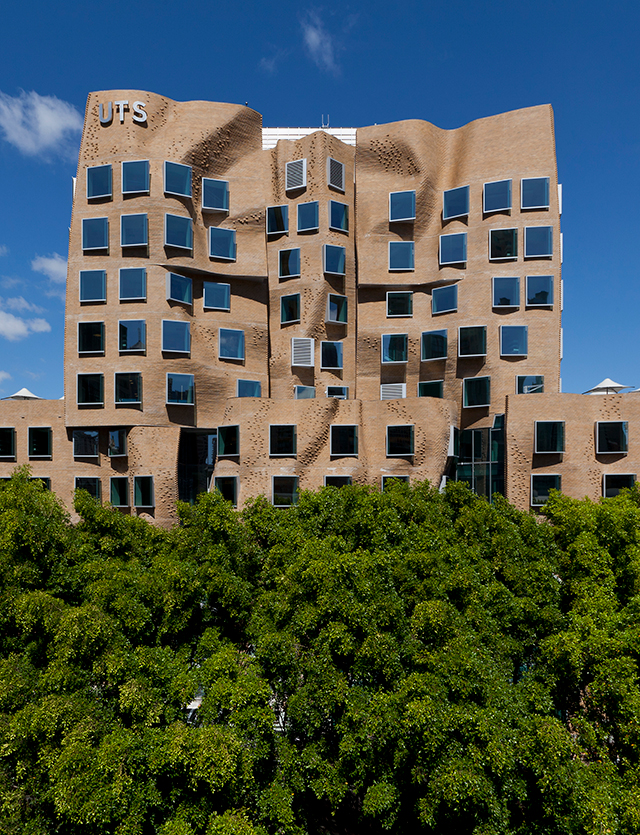Hassell Studio has designed a new, ultra modern, next-gen campus for the University of the Sunshine Coast. At three storeys and 11,382 square metres, the Foundation Building on the Moreton Bay campus has been designed for flexible teaching and collaborate learning. Working closely with Hassell, Living Edge was selected to be the single source supplier ensuring the furniture through the project continues to respond to the client’s brief and approach to education.
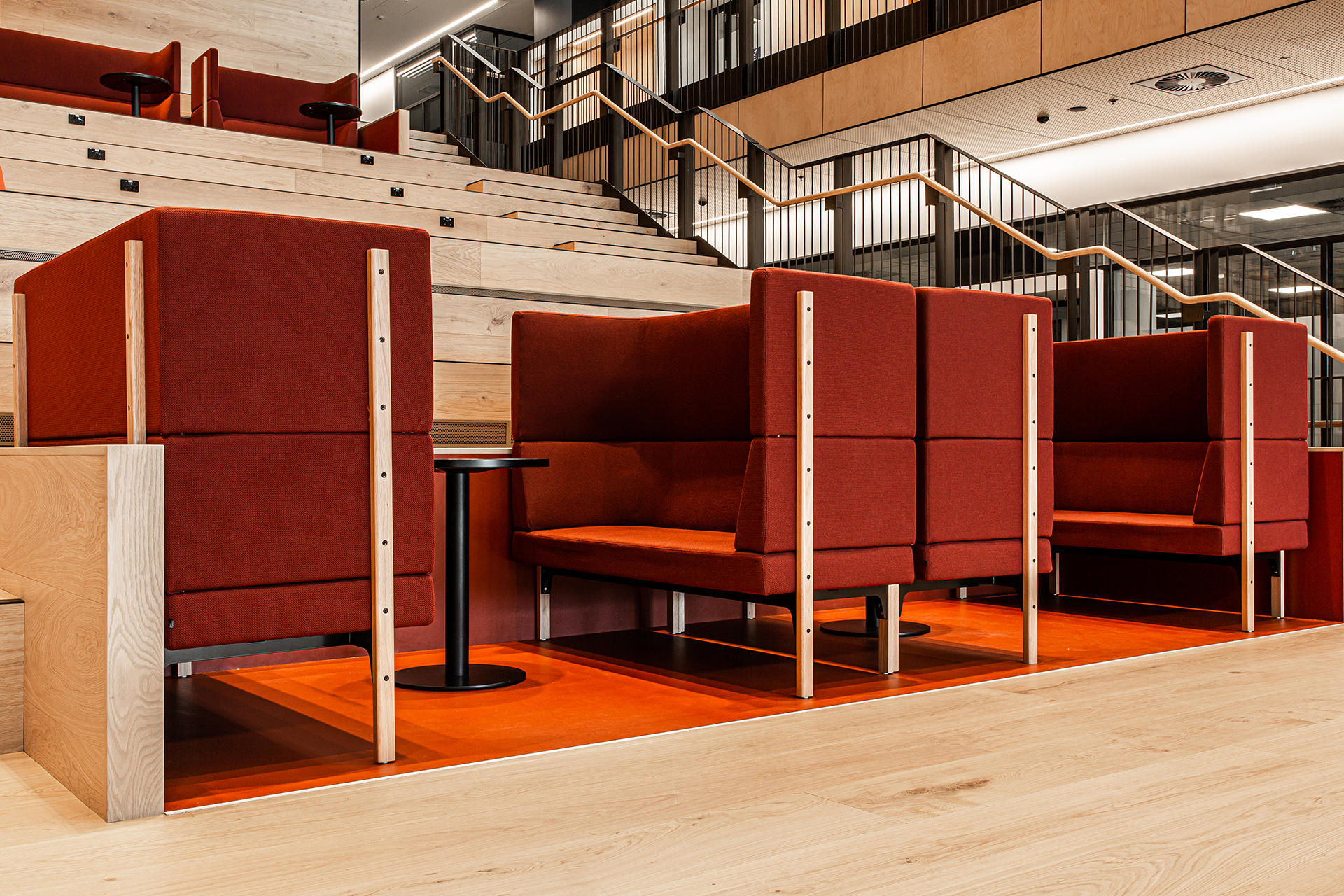
Designed for growth, the Foundation Building currently caters to 1500 enrolled students with that number predicted to grow to 5000 in the next three years, and 10,000 by 2030. The main auditorium, seating 460, has been designed to test this ebb and flow of attendance. There is space in front of the permanent seating for extra chairs, and design aficionados would recognise the iconic 40/4 chair designed by David Rowland in 1964 for Howe. It was the first stackable chair invented and gets its name from its ability to stack 40 chairs at just four feet. When not in use by the university, the auditorium, lecture theatre and other larger learning spaces is available for community events and gatherings.
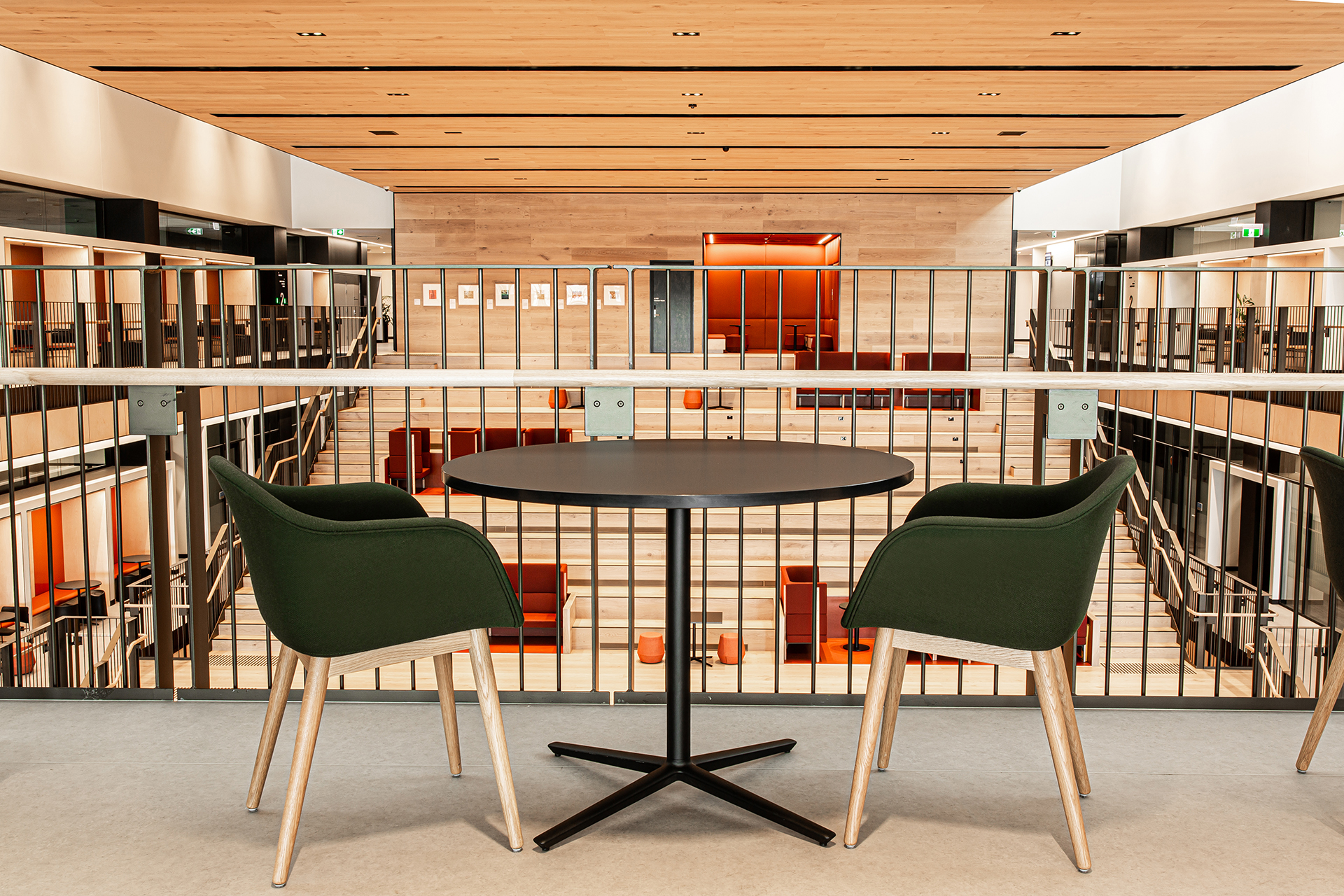
The central architectural element to the project is The Rise, a two-storey, stepped amphitheatre in the centre of the building with a variety of differently styled break out spaces. It has been designed in this way to facilitate long and short blocks of study, group work or social gatherings, and incidental meetings. The informal learning settings feature the Herman Miller Ratio and Imagine workstations and range from intimate booths, large group desks, whiteboard settings and single seating arrangements.
“Learning is as much about showing up to a lecture as is seating in a lounge and discussing ideas, visions and the future with fellow students,”
One of the most notable furniture pieces through the Foundation Building is the Homework sofa designed by Argentinian-born, Australian designer Alexander Loterzstain for his brand Les Basic. The Homework series was designed to evoke an ‘at home’ feel made suitable for education, working and co-working environments.
“Universities are evolving in their approach to education,” said Alexander Loterzstain. “At Derlot Group we follow this closely and always look to collaborate with the best architecture and interior design firms to innovate in the sector.” The soft upholstery and gentle geometry of the Homework sofa evoke the emerging concept of a sticky campus – one where students want to hang around. Oak legs complement the timber floors and ceiling while the red upholstery adds an appropriate pop of colour to the neutral material palette of light wood and black accents.
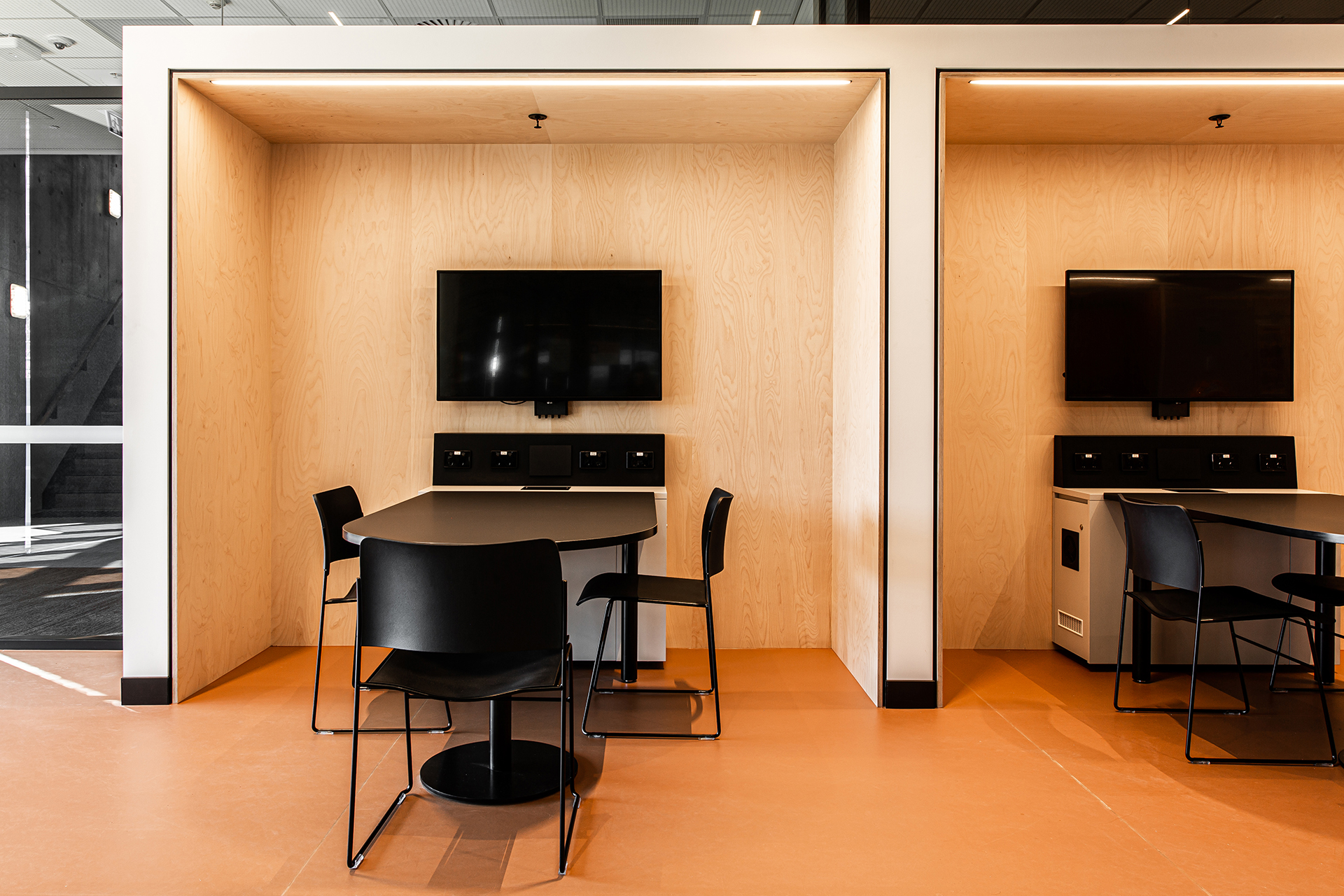
With the idea that constant technological innovations are a given, indeed very much anticipated, Hassell has designed a flexible space to accommodate future and unforeseen advancements, but they’ve also specified furniture that caters to holistic and flexible learning environments. “Learning is as much about showing up to a lecture as is seating in a lounge and discussing ideas, visions and the future with fellow students,” says Loterzstain.
Hassell has paid particular attention to the efficiency of the building during the design stage in order to mitigate the drain on resources usually associated with large footprint buildings, especially so on the perennially sunny Sunshine Coast. Deep overhanging roofs, sun-shading and solar power capture and use ensures the Foundation Building operates as efficiently as possible.
Equally, the working relationship and constant communication between Hassell and Living Edge was key to the success of the project. As a large-scale project Living Edge inducted more than 110 workers and kept open lines of communication and scheduling between all parties to ensure things progressed smoothly and desirably. As a result the products fitted throughout the Moreton Bay Campus of the University of the Sunshine Coast are purpose specific and fit for use, lessoning the need to repair, replace or upgrade over the years.
